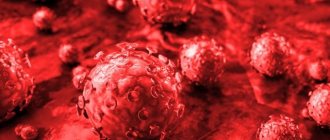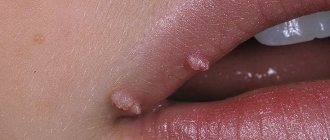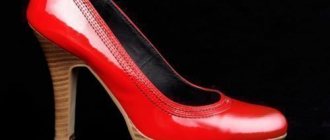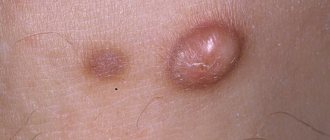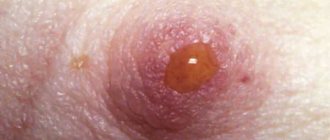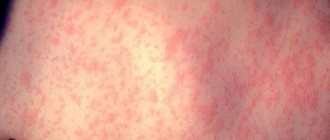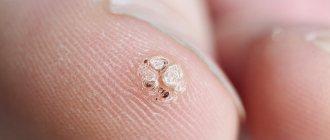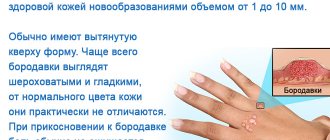When it suddenly becomes uncomfortable to wear your favorite shoes, a feeling of discomfort and pain appears in the foot, the cause of this may be a wart on the heel.
Disguised as a layer of dead skin, it is often mistaken for a callus, causing treatment to be delayed.
The lack of adequate therapy can lead to proliferation of the growth, damage to surrounding healthy tissue, rubbing it with shoes and infection.
- All information on the site is for informational purposes only and is NOT a guide to action!
- can give you an ACCURATE DIAGNOSIS !
- We kindly ask you NOT to self-medicate, but to make an appointment with a specialist !
- Health to you and your loved ones!
What is this
A wart or thorn on the sole is subcutaneous, that is, it grows inward from constant pressure when walking, slightly rising above the surface of the skin, increasingly causing discomfort.
- Black dots are visible in the tissues of the growth - these are clogged capillaries.
- The size of a benign neoplasm often reaches 1 cm, and sometimes more.
- 1–2 months after the discovery of the first wart, smaller daughter growths appear next to it.
- As a wart on the heel grows, it affects healthy skin cells, which are constantly injured, provoking inflammatory processes.
Reasons for appearance
Heel warts are caused by infection with the human papillomavirus.
- The pathogen enters the human body through microcracks and injuries to the skin or mucous membranes.
- Growths on the heel occur after walking barefoot in a public shower, bathhouse or swimming pool.
- The formation of warts does not begin immediately after contact with the virus, but after several weeks or months. The microbe lies dormant for a long time, without causing harm to its owner.
The growth of tumors can be triggered by weakened immunity, increased sweating of the feet, exacerbation of chronic diseases, hypothermia, taking contraceptives or antibiotics, chronic fatigue, and stress.
The virus infects the epidermis, affects the ability of cells of the basal layer of the epithelium to divide, integrating into their DNA, and disrupts the functions of keratinization of the skin.
In children
The reasons for the appearance of warts on the feet of children are the same - the virus penetrates into cuts, scratches, and chafing on the heels.
Children often change shoes and play with other people's toys in the yard or in kindergarten. The microbe can remain in the air and on objects for up to several hours.
A child’s immune system is not yet stable, its condition is constantly changing, so children are more susceptible to colds and viral diseases than adults.
Another factor that can trigger the appearance of warts on the heel is wearing shoes that do not fit the size of the foot, made from artificial materials that do not allow air to pass through, which leads to increased sweating of the feet, or walking for a long time in wet shoes.
A child's skin is more delicate, it is more easily damaged, opening paths for infection.
Prevention of occurrence
Treatment of warts on the heels is forced; a person experiences pain when walking. Papilloma is found in the body of all people, but begins to be active only when the immune system is weakened. You should take care of your health from an early age. An equally important condition is good nutrition.
The viral fungus penetrates the skin through microscopic cracks, multiplying rapidly if hygiene standards are not observed.
Wash your feet thoroughly every day and disinfect them after public places (baths, saunas, swimming pools, fitness clubs). An effective remedy is an antifungal cream, which can only be prescribed by a qualified doctor. After proper therapy, your feet will look much better. The article has been verified by the editors
Why are they dangerous?
- Warts on the heels constantly grow, causing unbearable pain when trying to step on the foot.
- They are capable of reproduction - any trauma to the growth can lead to infection of nearby tissues and the appearance of new warts.
- Neoplasms become a source of spread of the virus, creating a danger of infection for surrounding people.
- Rarely, warts can become malignant, causing the development of a cancerous tumor.
The beginning of growth degeneration may be indicated by:
- changes in color, shape and size;
- bleeding, discharge of ichor, pus;
- unpleasant smell.
If such signs are present, you should immediately consult a doctor.
Symptoms
A wart on the heel appears gradually.
- First, a shiny area of skin is detected, after which it hardens, forming a plaque that does not protrude above the surface of the skin. The neoplasm, pushing apart the surrounding tissues, begins to grow in depth and breadth, becoming covered with tubercles.
- In the center, the wart has a flesh-colored tint and may be yellow or bluish. The skin pattern is not visible on the surface of the growth; in appearance it resembles a dry callus.
Finding out whether it could be a wart is easy.
- It is enough to steam your feet and rub the skin with a brush.
- The stratum corneum should be easily removed, and underneath it, black dots are found - blood vessels clogged with blood clots.
The tumor causes symptoms such as acute pain, burning sensation, tingling while walking, rubs against shoes and often bleeds.
Features of neoplasms
If any new growth or growth appears on the heel, it is necessary to first determine its nature. These are not always heel warts, so you should examine the growth in detail and consult a doctor for a professional diagnosis. In addition, the doctor will advise how to cure or remove the wart, and advise on existing methods.
Symptoms
However, even before visiting a doctor, you can try to determine the nature of the growth if you know what a wart on the heel looks like and how it differs from other neoplasms. The characteristic features in this case include:
- a convex tubercle 1-2 mm above the surface of the skin (sometimes with a depression in the center);
- round or oval shape;
- size from 2 to 10 mm (in rare cases it can be even larger);
- most often single, in the absence of treatment can provoke the formation of new warts on the surface of the foot;
- there are small black dots on the surface of the growth;
- small-papillary structure;
- there is a root going deep into the tissue;
- Over time, it becomes covered with a thick layer of hardened skin and acquires a yellowish tint.
In order not to confuse it with a callus, it is necessary to free the growth from the layer of rough skin covering it. For this purpose, you should steam the skin of the foot, carefully remove the stratum corneum from the tubercle, and wipe the foot dry. After this, you can begin to examine the surface of the wart.
The opened surface will look like small pinkish papillae squeezed together. Black dots should be visible among them - a hallmark of warts. When you press on the tubercle in the deeper layers, pain occurs. This is due to the fact that the wart on the heels has a rather large root, which, located in the thickness of the tissue, causes pain to a person.
If, as a result of the examination, the above signs were detected, then this neoplasm is a wart. It is necessary to consult a doctor to confirm your own conclusions and in order to decide how to get rid of a wart on the heel.
Causes
It should immediately be noted that, despite the apparent simplicity of the problem, solving it is not so easy. If a wart has formed on the heel, it means that the human papillomavirus (HPV) is present in the body. This virus exists in the body of almost every adult; according to some data, the number of people infected with it reaches 90% of the entire adult population of the earth.
This is explained by the simple method of transmission and the impossibility of removing it from the body throughout life. You can become infected with HPV through normal contact with an infected person. Among the methods of infection there are also so-called household routes - sharing personal hygiene items or even cutlery.
Diagnostics
Before you begin to treat a wart, it is important to consult your doctor.
Photo: visual examination of the patient's skin
A qualified doctor will diagnose a wart based on a visual examination.
In complicated cases, other methods are used:
- dermatoscopy - examination using a special surface microscope, which makes it possible to enlarge the tumor 10 times and carefully examine its structure;
- Ultrasound is prescribed to determine the depth of tissue damage in order to choose the optimal method of removal, as well as to exclude keratoderma, which is similar in symptoms.
Ways to remove warts on the heel
There are several ways to get rid of a wart, each of which has its own advantages and disadvantages.
There are methods:
- exposure to pharmaceutical chemicals that burn out growth;
- surgical and destructive, which are carried out strictly on an outpatient basis.
It is better to entrust the choice of the most effective method to a specialist.
Pharmacy drugs
Treatment at home can be carried out using pharmaceutical wart removal products, which are sold over-the-counter at an affordable price.
It should be understood that they use aggressive components as active ingredients (for example, acids, alkalis), which can cause burns to healthy tissues.
Photo: pharmaceutical products used for treatment
Therefore, drugs must be used with caution:
- consult a doctor about the advisability of using the product;
- Avoid contact with the surrounding skin and mucous membranes;
- do not exceed the dosage and do not violate the regimen specified in the instructions.
Pharmaceutical drugs are:
- solutions or creams based on salicylic, triacetic, retinoic, nitric acid, which are applied directly to the wart, have cauterizing properties, and have a destructive effect on pathological tissues (Tretinoin cream, Solcoderm solution, Kolomak);
- “Lapis pencil”, which contains silver nitrite, is more convenient and does not spread. Its tip is pre-moistened in water, after which the wart is treated with it twice a day;
- The Salipod patch with salicylic acid is effective for removing warts on the heels. First, the feet are steamed, the top layer of the growth is removed, and a circle corresponding to the size of the growth is cut out of the patch, then glued to it. It is better to stick a regular plaster on top for fixation. After 2–3 days, the patch is removed, the softened layers of the wart are scraped off, after which treatment with oxolinic ointment is necessary three times a day for about a week. If the wart is not completely gone the first time, the patch is reapplied;
Photo: products with salicylic acid
- solutions with phenol and tricresol (“Verrukacid”) are applied to the surface of the warts several times in a row after steaming the skin. Treatment is repeated every 10 days until the wart disappears. Phenol preparations are contraindicated for children due to their high toxicity;
- agents operating on the principle of liquid nitrogen that freeze growth tissue (Cryopharma, Wartner Cryo). After treatment, the wart turns white, which indicates the beginning of tissue death, then turns black and falls off.
Photo: Wartner Cryo for self-removal
To combat the virus, antiviral ointments (for example, Aldara) are prescribed, which are used to treat the surface of the warts, which prevents the spread of the pathogen and affects its ability to synthesize protein.
These products are safe for use in children and stimulate local immunity, helping the body cope with the disease on its own.
Treatment with folk remedies
Treatment with folk remedies, which any housewife has at hand, is not always effective in the fight against heel warts; it requires a lot of patience, but it is affordable and safe.
- Before removing a wart using folk remedies, you need to steam your feet in hot soapy water, to which you can add herbal decoctions from spruce branches, strings, and sea buckthorn.
- The upper stratum corneum should be carefully cut off or scraped off with a brush.
How to remove senile warts? Find out here.
If the spine is small, you can try to remove it as follows:
- Infuse the green onions in vinegar, then apply the feather to the growth and secure with a bandage overnight. Repeat compresses until complete healing;
- rub the wart with a slice of raw potato, then leave it pressed tightly against the growth overnight;
- every evening, drip vinegar into the center of the tumor;
- birch bark, which contains salicylic acid, is applied to the wart;
- A slice of garlic is also applied to the wart overnight, secured with a plaster or bandage;
Photo: removal with garlic
- mix vinegar and flour to form a dough, roll into a ball and stick it on the wart. Usually one night is enough for the growth to fall out, but sometimes the procedure needs to be repeated several times.
It’s not for nothing that our grandparents in their youth preferred to walk down the street barefoot.
- After all, this contributed to the natural erasure and disappearance of warts on the feet. It is useful and pleasant to walk barefoot on sand, pebbles, grass and earthen paths.
- This method helps remove warts on the heel in children and young people whose foot skin has not yet become rough and is more delicate and thin.
- Walking in dew hardens the body and increases its resistance to infections.
How to cure with celandine
Celandine has long been used to remove warts.
Photo: the juice of a freshly picked plant is used to remove growths
The plant juice contains ascorbic acid and essential oils, which destroy growth tissue, disinfect and promote healing.
- For treatment, celandine juice is used during its flowering period (early summer), which is applied directly to the wart 2-3 times a day.
- An ointment is made from celandine by mixing the juice with vegetable oil, petroleum jelly or glycerin, which must be stored in the refrigerator, or an alcohol tincture. To do this, freshly harvested celandine stems are washed, dried and passed through a meat grinder, then the juice is squeezed out. For 0.5 liters of vodka you will need twice as much juice.
Tincture or ointment can be used to treat growths all year round.
Blackening of the wart indicates tissue necrosis.
Photo: signs of tissue necrosis
At this stage, treatment cannot be interrupted; it must be continued until the wart completely falls off on its own.
It is strictly forbidden to forcibly pick out or tear off the spine.
Treatment of growths
You can get rid of a wart on the heel in a medical facility or at home. At the clinic, the doctor will offer a choice of several options for removing the growth. At home, the plaque can be removed with the help of medications. The choice is always up to the patient. A final decision should be made only after confirmation of the diagnosis.
Surgery
The doctor will suggest surgical removal of a wart on the heel if it causes intense pain and makes it difficult to move. In one procedure, the surgeon will relieve the patient of discomfort and pain. You can remove the plaque in the following ways:
- Cryodestruction. The tumor is frozen with liquid nitrogen. The procedure is carried out provided that the wart has not had time to grow deeply. It should be performed by an experienced doctor, since superficial treatment of the tissue will not destroy all pathological cells. If the doctor uses too deep a freeze, the patient may be left with a scar.
- Electrocoagulation. The lump is removed using an electric scalpel. The dermatologist takes the remaining tissue with a special loop.
- Laser coagulation. The growth is removed with a pulsed or carbon dioxide laser. Laser coagulation is quick and painless. During the procedure, the doctor can control the depth of laser penetration, this allows the root to be completely removed. A crust forms at the site of exposure and falls off on its own. The tissues are completely restored within 10 days.
- Radio wave surgery. A radio wave knife can bloodlessly remove the growth. Since the procedure excludes contact with blood, the virus is not able to enter the bloodstream and re-infect a person.
- Surgical removal. The wart is excised under local anesthesia using a scalpel. This procedure is traumatic, so it is used only when there is a suspicion that the growth is malignant. In this case, it is possible to send the excised tissue for histological examination. Surgical removal is recommended if the wart has reached an impressive size. After the operation, the patient may be left with a scar.
After all of the above procedures, a crust may form at the site of removal of the growth. It is forbidden to tear it down. In addition, it is not recommended to wet the affected area for several days.
Use of medications
Treatment of heel warts at home is performed using pharmaceutical medications. Therapy will be effective if the tumor has not yet taken root deeply and its diameter does not exceed two centimeters. It is recommended that you choose a medicine with your doctor. The drugs that have proven themselves best include:
- Cryopharma. This product is a mixture of dimethyl ether and propane. At the exit from the cylinder, liquefied gases are capable of creating a temperature of minus 55 degrees. The neoplasm freezes and dies. To remove the spine, it is recommended to purchase Cryopharma for feet. Its set includes a special reusable nail file, as well as plasters designed to protect the treated area. The spine dies off, and the skin is completely cleared two weeks after treatment.
- Wartner Cryo. The drug is a direct analogue of Cryopharma. It freezes the growth to the very base. One package is enough to treat 12 warts.
- Verrucacid. Destroys not only warts, but also papillomas. This drug is contraindicated for children under seven years of age. Verrucacid is available in the form of a solution and is applied directly to the growth using a special applicator. To destroy small tumors, a single application of the product is sufficient. Warts larger than two millimeters in radius may require multiple treatments to remove.
- Super clean. The product has an antiviral and exfoliating effect and is an alkali solution. Apply to nodules once. Large tumors require repeated treatment.
- Condilin. The product has a cauterizing, mummifying and antimycotic effect. The main active ingredient is podophyllotoxin, which is obtained from the roots of podophyllum. Using an applicator, the drug is applied once every 24 hours. Treatment lasts no more than three days. The product should not be used by nursing mothers, pregnant women and children under 12 years of age.
Folk recipes
Treatment with folk remedies is natural, safe and affordable. Unfortunately, heel warts are more difficult to remove than other types of growths. Such therapy will require a lot of perseverance and patience.
The following recipes will help you get rid of tumors:
- Green onions are poured with vinegar and left to infuse for 24 hours. Before going to bed, apply the onion to the growth, fix it with a bandage and plaster. The procedure is repeated until the plaque disappears.
- Every day before going to bed, rub the wart with a piece of raw potato.
- Acetic acid is applied daily to the growth using a pipette. To protect healthy tissues, they are treated with Vaseline.
- Birch bark contains salicylic acid, which can eliminate warts. A piece of bark is secured to the new growth with a bandage and left overnight.
- Apply a thin slice of garlic to the growth, leaving it overnight.
- Flour is mixed with vinegar to form a dough. The finished ball is placed on the wart and secured with a band-aid. One procedure is usually sufficient to remove a small growth.
- During the flowering period of celandine, you can use the juice of this plant. The liquid is applied to the wart three to four times a day.
- Horseradish root, crushed into a pulp, is applied to the neoplasm. The paste is covered with cellophane and secured with a bandage. The compress is left overnight.
- Rowan berries are crushed. The juice is squeezed out of the resulting pulp. The spike is lubricated several times a day with rowan juice.
Often the spines disappear without any treatment. This occurs when the immune system suppresses the virus. But if the tumor causes pain, you cannot wait until it heals on its own.
You can reduce the risk of contracting papillomavirus. To do this, you must wear rubber slippers in the pool and sauna, do not wear someone else’s shoes and do not use other people’s personal hygiene items. In addition, it is necessary to strengthen the immune system, which is a strong ally in the fight against the virus.
Prevention
Adhering to preventive measures is always easier and more economical than treating a progressive disease.
Moreover, to avoid infection with papillomavirus, it is enough to follow simple rules:
- do not use other people’s personal hygiene items (towels, hard soap, brushes and pumice stones for heels);
- be sure to wear rubber shoes in the shower, swimming pool, sauna;
- do not try on shoes in a store without socks;
- do not wear someone else's shoes;
- do not allow children to run barefoot in enclosed spaces with high humidity or in polluted areas;
- choose shoes made from natural high-quality materials in which the foot breathes and does not sweat.
How to use salicylic patch for warts? Find out here.
How to cauterize a wart at home? Read on.
- This is explained by the fact that the immune system is able to cope with the virus when favorable conditions are created for this.
- But if a wart causes inconvenience and pain, and prevents you from living a full life, then there is no need to endure it and it is better to remove it immediately.
But the main thing in treatment is not removing the tumor, because it can easily reappear if the immune system, which is the only ally in the fight against the virus, is not comprehensively strengthened.
Good nutrition, sports, and an active lifestyle will help you maintain health for many years and forget about unpleasant warts forever.
Video: “Removing a wart on the heel”
A wart on the heel is a formation of viral origin, resulting from activation of HPV in the body. It grows gradually, imperceptibly. A distinctive feature is a rough bump that does not protrude above the surface of the skin. There is a deepening inwards and in breadth. The growth does not differ in color from the surrounding tissues or has a yellowish, white color. The most common location is the heel. The growths are located on the supporting part and cause pain.
Reasons for the appearance of heels
Papillomavirus is the main cause and culprit of suffering. The infection sneaks inside under different circumstances. A child can become infected from his mother or in kindergarten when using shared towels and toys. An adult - in a bathhouse, sauna, swimming pool. The virus penetrates through damage to the skin and integrates into the genes of cells.
Factors that reduce local and general immunity:
- chronic stress, which increases the load on the body;
- excessive sweating of the feet, which creates a favorable environment for the growth of viruses and bacteria;
- tight, uncomfortable shoes;
- hormonal imbalance in the body;
- violation of personal hygiene rules.
Is the appearance dangerous and how to distinguish it from a callus?
Internal plantar growth can be dangerous. Its growth is provoked by the papilloma virus, which parasitizes inside the cells of the epidermis and mucous membranes. Over 100 strains of infection are known, but only types 16 and 18 pose a high oncogenic danger. Warts on the sole appear as a result of infection types 1 and 3. They do not tend to degenerate into an oncological tumor. Treatment is necessary; constant pressure causes pain and discomfort.
Located on the dense part of the leg, the papilloma becomes like a dry callus. It is difficult to independently differentiate the type of education.
In some cases, it is possible to identify a plantar wart. It does not have a skin pattern, but inside, under a dense layer, dark spots are visible - thrombosed capillaries.
Methods for removing plantar warts
Treatment of heel warts involves complete removal and prevention of the appearance of new elements. The main condition for successful therapy is to increase local and general immunity. In addition to destruction methods, antiviral drugs are used for external use or oral administration. Due to the safety of papillomas on the soles, you can choose any method of removal that is available to modern medicine or traditional healers.
Hardware techniques
In specialized clinics, removal of skin defects is carried out using specialized expensive equipment. Increases the effectiveness of the fight against HPV and minimizes the risk of relapse. Plantar papilloma grows to a depth, which makes electrocoagulation ineffective. Current can only be used in the early stages, when the growth has grown slightly and has low density. For large elements, the following methods bring positive results:
- Cryodestruction. Popular and inexpensive method. The doctor directs liquid nitrogen into the growth, which causes cell death and the gradual restoration of healthy tissue. The effectiveness of treatment directly depends on the experience of the specialist. It is important to correctly determine the depth of insertion in order to completely remove the wart without damaging the skin. If the procedure is performed incorrectly, a scar will remain at the treatment site or the formation will grow again after some time. Antiseptic treatment is required for a week after the procedure to prevent infection. Potassium permanganate (weak solution) or salicylic alcohol is used.
- Laser. An effective and safe option. Removal allows you to achieve maximum therapeutic and cosmetic results. The surgeon has the ability to regulate the intensity of the beam and the depth of its penetration, which does not leave scars. For the patient, the process is quick and painless. The wart and its root are burned away without a trace and without a chance of recurrence.
- Radio wave therapy with the Surgitron apparatus. Helps quickly remove plantar formations and speeds up the healing process. The radio knife cuts off the growth and cauterizes the vessels at the edges of the resulting wound. Prevents the spread of the disease.
- Surgical excision. Used in extreme cases. Most clinics abandoned it due to the difficult rehabilitation period, high pain, and problems with the appearance of new warts. A scar remains at the site of removal.
The specialist will tell you about ways to get rid of warts on the heel, based on the results of the examination and dermoscopy.
Folk remedies
You can trust natural remedies to get rid of painful growths on your leg. A homemade recipe has fewer side effects than any medication. The technique is preferred by women during pregnancy, patients with diabetes mellitus, and other severe pathologies in which operations and medications threaten the development of side effects. In folk medicine, there is only one contraindication - intolerance to the components. Read the recipes carefully, select the best options for your needs and individual characteristics.
- Rinse medium-sized potatoes well under running water and grate them using a grater with fine notches. Place the resulting mass on thick paper and attach it to the sore spot with a bandage. Repeat for 3-4 weeks until the skin is completely cleansed.
- Tear the celandine (fresh leaves) into two parts. Apply the released liquid to the surface of the growth 4 times a day until it is completely replaced by a healthy cover.
- Combine vinegar and flour in a 1:2 ratio in a bowl. Lubricate the formation with the resulting mixture so that the surrounding skin remains clean. For protection, you can use a patch with a slot for the growth. Getting rid of large elements takes up to 1 week with treatments 2 times a day.
- Apply iodine 2 times a day directly to the problem area until healing.
- Cut out garlic or onions with a knife and apply to the wart. Before each procedure, the leg is steamed, the removed keratinization is cut off so that the treatment has maximum effect. Remove the layer with scissors so that there is no pain. Don't rush, take the steps step by step.
To increase local immunity, in between procedures, apply castor oil to the heel or apply a cotton pad previously placed in kombucha.
For the folk recipe to work, you must be patient and not violate the treatment regimen.
Pharmacy drugs
The pharmacy offers a wide range of effective remedies that can come to the rescue in difficult situations.
- Lapis pencil. Causes death of the treated skin. As a result, the growth may turn black and disappear. The instructions indicate the need for treatment twice a day until complete healing.
- Feresol. Allows you to get rid of papillomas of all types. It is a solution where the active component is phenol. Its impact causes softening and gradual peeling of the skin. Before treatment, the foot is steamed so that the drug can penetrate deeper. The detached keratinization should not be removed. Repeat the procedure after 10 days.
- Salipod. A simple and affordable remedy for removing warts. The composition contains salicylic acid, which gradually softens the keratinization and kills the virus. The condyloma is slowly healing. One pad is worn for 2 days, then it should be changed.
- Oxolinic ointment. The affected area should be lubricated three times a day for a week. After a break, the course is repeated until the skin is completely cleansed.
- Imiquimod. A gentle product that allows you to remove defects from the skin of children. Apply 7 times at night, according to the schedule every other day. The next morning, wash off using a soapy water solution.
- Super clean. An aggressive chemical that burns out papilloma. Healing occurs quickly.
- Tretionine. Available in gel form. Apply and leave to form for 6 hours. Causes softening of the skin, which should be removed after each procedure.
Removal of tumors in clinics
If treatment of warts on the foot with folk remedies does not help, then in order to avoid negative complications you should resort to modern medicine and remove the interfering growths using hardware techniques, of which the most popular are:
Keratolysis, the essence of which is the exfoliation of necrotic skin cells due to the influence of a catalytic substance, which is played by various aggressive acids, such as trichloroacetic or salicylic. Cryodestruction is a relatively inexpensive and common procedure, during which the plantar wart is exposed to liquid nitrogen, during which it is important to correctly calculate the depth of penetration of the substance, otherwise a noticeable scar will remain on the body. Among surgical methods of getting rid of papillomas on the feet, patients often prefer radio wave surgery - a relatively new direction that eliminates unwanted growths using a special knife that cauterizes the vessels, which prevents bleeding and stops the multiplication of the virus. Laser therapy is also popular and effective, and does not take much time during the session. Unlike cryodestruction, the procedure is less traumatic - it is easier for a specialist to control the depth of impact, so healthy tissue cells are not affected, and recovery is many times faster
This operation is completely safe since the specialist’s instrument does not come into contact with the patient’s skin.
Excision of warts with a scalpel under local anesthesia is noticeably losing its relevance due to the long and painful rehabilitation period.
Each of the listed methods and folk recipes allows you to get rid of growths in a fairly short time, but such radical measures will only be effective if you stop the replication of the human papillomavirus and take good care of your body.
Please leave a comment:
Possible complications
The lack of correct, timely therapy provokes an increase in papillomas in size, their deepening into the skin of the heel. Causes unbearable pain during hygiene procedures and when moving. The patient cannot stand on his feet for a long time. Provokes joint and muscle pain.
Constant friction and pressure injure the skin, and the infection begins to actively spread to healthy areas. May cause painful bumps to cover the entire heel and sole. Treatment will consist of comprehensive restoration of immunity and removal of skin defects.
Papilloma with dark dots inside is the main sign of HPV infection. The virus likes to attack people with weakened immune systems, those who have had serious illnesses, or those who work in difficult conditions. Condyloma appears on the mucous membrane. Dr. Komarovsky advises immediate treatment if similar growths cover the child’s heel, before problems with the development of the musculoskeletal system begin. Use different methods (varnish, devices, compresses, solutions) to achieve results as quickly as possible.
Skin tumors of a benign nature - growths of the epidermis, a cosmetic defect. Large warts on the heel cause pain and interfere with walking. Dense formations on the sole appear as a result of infection with the human papillomavirus, its genotypes 1, 2 and 4.
Clinical symptoms
Every person should know what a wart looks like on the heels. Since outwardly it can easily be confused with a callus, you need to become familiar with the main distinguishing symptoms of viral tumors.
You can distinguish warts that appear on the heels by the following signs:
- The growth appears on the skin gradually. There is no way it can form in one night. Calluses appear almost instantly.
- In the vulnerable area, at the very beginning, a small shiny spot forms, from which a wart is subsequently formed.
- Some time after the formation of the growth begins, you may notice a strange plaque on the heel. It will not rise above the surface of the skin.
- The growth tends to expand and grow inward.
- The surface of the wart is covered with small tubercles.
- In the middle the growth is flesh-colored. Sometimes its shade varies from yellow to blue.
- The top layer of the tumor is easily removed after steaming the skin. You can see dark dots underneath. These are clogged vessels.
We invite you to read Let's compare what is better - zinc paste for acne or zinc ointment?
Patients think about how to quickly remove a wart on the heel, because over time it begins to hurt a lot. Tingling and burning are often felt at the site of the lesion. All these signs of infection make themselves felt while walking.
There are several types of warts:
- Flat wart (juvenile) - localized on the hands, face and mucous membranes of the mouth.
- Simple - considered the most common among children, it occurs as a result of violations of hygiene standards and hormonal changes, and sometimes goes away without special treatment.
- Palmoplantar - located on the feet and palms, their occurrence is facilitated by flat feet, wearing tight shoes, and poor hygiene.
- Thread-like - color varies from flesh to brown, forms on the neck, eyelids and other areas with delicate skin.
Main symptoms:
- oval/round shape;
- dense structure;
- black dot in the center;
- absence of pain syndrome.
Warts are contagious; the papilloma virus is transmitted through contact from person to person, as well as through household objects on which it can live for a long time.
Infection can occur in a store or swimming pool; the risk of infection increases with excessive sweating, abrasions and wounds.
Warts of this type are oval or round in shape, ranging in size from 1 mm to 1 cm.
They protrude 1-2 mm above the surrounding surface and often do not differ in color, although in some cases they can be pink, whitish or pale brown.
At first, the neoplasm does not stand out from the surrounding background, but as it grows it begins to thicken and protrude. The wart is covered with several layers of epithelium, which become keratinized and rough to the touch.
The color may change to yellowish-gray. Sometimes in the center of the formation there is a pronounced convexity in the form of a point or, conversely, a concavity with a funnel inside. Gradually, the wart increases in size and becomes inflamed, as walking provokes friction between the sole and the shoe.
This neoplasm usually appears in single copies, but if the immune system is too weak, then the disease can become widespread and spread to other parts of the body.
If the wart is not treated, it will become a callus due to constant friction and subsequent hardening. It does not hurt in itself, but problems arise when it is damaged.
In this case, an inflammatory process of an infectious nature may begin, since bacterial and fungal infections penetrate through the damaged formation, which can lead to purulent inflammation and sepsis.
How do warts form on the heel of the foot?
Human papillomavirus infection penetrates through the smallest and noticeable damage to the skin: microcracks, diaper rash, scratches, abrasions. For virions, this is a real “gate” that opens the way through the stratum corneum to living tissues. If the immune system copes with the threat that has arisen, then pathogens will not be able to penetrate the cells, and warts will not appear.
The incubation period between infection and the appearance of the first symptoms of HPV is on average 2–3 months. Often a phenomenon called viral persistence occurs: there are no symptoms of the disease, but the pathogen remains viable in the host’s body for many years.
The dense layers of keratin on the feet become wet when sweating and become covered with cracks. A favorable environment is created for the penetration of certain types of HPV into the layer at the border of the epidermis and dermis. Moisture facilitates this process, so infection usually occurs in public swimming pools and locker rooms, showers, baths, and saunas. Under the influence of a viral infection, living human skin cells begin to reproduce foreign DNA.
The process of growth of all types of warts involves disruption of division and keratinization in the affected tissues. However, skin tumors on the sole differ in shape, they are painful, and are more difficult to treat. A heel wart is flatter than a similar formation on the top of the foot. The dense core grows inside the dermis and irritates the nerve endings.
Treating heel warts at home
A wart on the heel provides a person with unpleasant, painful sensations.
Most often it appears due to the entry of the papillomatosis virus into small lesions of the skin on the legs. Let's take a closer look at why heel warts occur in adults and children, and what treatment is needed to get rid of them. The reasons for the appearance of warts described below must be carefully analyzed to determine what exactly triggered the appearance of formations on the heels. By identifying the exact causes and eliminating them, you can quickly get rid of unpleasant, painful formations. The reasons for the appearance of warts on the heels are as follows:
- Penetration of the papilloma virus into the body. The virus spreads in moist and warm environments. It can be picked up when visiting a swimming pool, sauna, bathhouse and gym;
- Weakened immunity. If a person has a strong immune defense, the virus lives in his body asymptomatically. But, if the immune system becomes weak, it comes out;
- Excessive sweating of the feet;
- Severe dry feet;
- Wearing uncomfortable shoes, which causes deformation of the feet;
- Development of diabetes mellitus, varicose veins of the legs;
- Foot injury.
Symptoms
In their appearance, warts in the heel area resemble calluses. They have a keratinized, rough coating. The wart protrudes above the surface of the skin.
Symptoms of warts:
- Initially, dense and dry formations no larger than five centimeters in size appear;
- At the first manifestations, the formations do not differ in color from the skin and do not yet hurt;
- Since a person rests on his heel when walking, the wart begins to grow not outward, but inside the skin epithelium;
- The stratum corneum and epidermis thicken;
- The processes of keratinization of the epidermis are disrupted. The synthesis of protein, which is the “building material” of the skin protein keratin, stops.
Sometimes a round depression forms in the center of the wart on the heel.
A wart on a child's heel is a small dry lump with a rough surface. It causes considerable discomfort when there is pressure on the foot, which makes walking quite painful at times. The appearance of such formations is caused by papillomavirus types 1, 2, 3 and 4. In most cases, they are benign, but still require medical supervision.
Photo of warts on a child’s heel
A plantar wart usually appears on the child’s heel. It is a flat growth, similar to a dry callus. The formation practically does not rise above the skin and quite often grows inside. In most cases, its shape is round, making it look like a spot. Its color is white, yellow, flesh-colored.
If left untreated, a wart on a child's heel may increase in size. At first its diameter is approximately 0.3 cm, and over the course of several months it sometimes reaches 1 cm.
[/attention]
Due to excess pressure on the foot, a wart on a child’s heel is often damaged. A symptom of this is bleeding, and there is also the possibility of infections entering the body. If this occurs, inflammation, redness, and tissue irritation may occur. In this case, it becomes possible to increase body temperature and deteriorate overall health.
- See how to distinguish a wart from a callus in children
The appearance of a wart on a child’s heel is provoked by the papilloma virus after infection of the body. Until this moment, about 3-6 months pass, which is approximately how long the incubation period lasts.
It can be longer if the immune system is strong enough to suppress HPV activity.
In children, such growths occur much more often than in adults, due to frequent vitamin deficiencies, which lead to weakening of the body.
Most often, children become infected when communicating with peers or adults who are carriers of HPV. This is possible when using toys, dishes, stationery items, etc., which have traces of the pathogen. It enters the body along with lymph, saliva, and blood, which contain the virus in large quantities.
Often, warts on a child’s heel appear due to infection with the papilloma virus in kindergartens, schools, public swimming pools and transport.
This is especially likely if, after visiting such places, the child did not wash his hands and began to eat food or bite his nails.
Another possible reason for the appearance of a wart on a child’s heel is the use of unsterile instruments when visiting doctors.
No less risky is walking barefoot on the street and in the house if HPV carriers live in it. The pathogen can remain active for a long time in the absence of thorough cleaning.
If the humidity here is high, then the likelihood of becoming a carrier of the virus increases significantly.
[/attention]
Among them, it is necessary first of all to note malnutrition, when children in their diet do not have enough foods rich in iron, folates, ascorbic acid and many other useful substances.
We suggest you familiarize yourself with Which medication is better Ovestin or Ovipol Clio and how they differ
Basically, such problems arise when eating insufficiently large quantities of raw vegetables and fruits, herbs and berries (cabbage, tomatoes, peppers, onions, apples, bananas, etc.).
Another factor that increases the likelihood of a child developing a wart on his heel is insufficient deep and long sleep. Usually this is said if the child rests less than 7-9 hours a day and often wakes up at night. All this has a bad effect on the functioning of the immune system and the protective properties of the body.
Gastrointestinal diseases have a negative effect on the body's defense against HPV. The most dangerous in this regard are gastritis and colitis, which impairs the absorption of nutrients. Because of this, a deficiency of various vitamins, minerals, and amino acids occurs, which leads to disturbances in the functioning of the immune system and causes the appearance of warts on the child’s heel.
No less harmful to health is treatment with antibiotics, which reduce the number of beneficial bacteria. Without them, the body’s defense against HPV is reduced, which, as a result, freely infects healthy cells and provokes the appearance of tumors.
Children with hormonal imbalances and high blood sugar levels are most susceptible to developing a growth. In the case of the latter, the wounds heal slowly, which allows the virus to easily penetrate through them into the body.
Very often, the cause of discomfort in the feet is the appearance of warts on the heels. Sometimes they can cause pain when walking and they tend to appear in all people, regardless of age.
The cause of warts on the heel is usually microscopic cracks that appear on the legs. Infection can be acquired in establishments such as baths, steam rooms or fitness centers. The virus is able to hide its activity for a long time, gradually destroying epidermal tissue.
Over time, neoplasms begin to form, which, after entering the active phase, are quite difficult to cure. Sometimes this takes about a year.
Symptoms
If measures are not taken in a timely manner, the wart begins to progress, disrupting the structure of the upper tissues. This provokes pain when moving.
Symptoms of warts or condylomas do not appear immediately, but gradually. Therefore, it is necessary to remember the main signs so as not to start an infection:
- A smooth spot appears on the surface of the skin, which begins to roughen over time.
- A hardened plaque is formed, which does not stand out relative to the upper layer of the epidermis.
- The affected area of skin begins to grow in height and width, forming a characteristic growth.
- The middle of the new growth has a body color with a bluish or yellow tint.
- A wart does not have the structure of normal healthy skin.
If suspected, a wart can be identified visually. To do this, you need to steam your feet and then rub your heel with a rough brush.
Naturally healthy areas of the skin (the upper stratum corneum) will be removed and problem areas will reveal themselves. A darkened growth will appear that may hurt, burn, or sting when walking. Sometimes, rubbing them with shoes causes slight bleeding.
- For comparison, photos of warts on the heel can be found on the Internet.
Treatment options
Removal and treatment of warts on the heel is carried out in several ways:
- Drug treatment using various ointments, chemical reagents and acids that cause the death of parasitic tissue.
- Surgery involves removing warts surgically using anesthesia.
- Traditional methods are based on the treatment of neoplasms with various herbal decoctions and natural ointments.
The most primitive way to get rid of a wart on the heel of a child or an adult is removal using a scalpel and anesthesia. However, there are other, more gentle methods for removing warts from the heel.
Modern medicine has long used laser and ultrasound technologies, but unfortunately they are not available in all clinics. Special medical institutions may offer the following treatment:
- Laser therapy is more of a cosmetic procedure in which tissue is restored using special laser beams.
- Electrocoagulation is caused by cauterization of external growths, which usually leaves scars.
- Cryodestruction is the removal of warts using liquid nitrogen at a temperature of 195ºC. This method is considered the most popular due to its effectiveness and minimal pain.
- Dermatologist of the highest category Inna Vladimirovna
- 30611
- Update date: October 2019
Difference from calluses
A wart on the heel of the foot often looks like a dry callus or corn. A small yellow or grayish papule appears, then others may appear nearby. The central part is hidden inside the skin, growing towards the dermis.
Symptoms of a wart on the heel:
- severe discomfort, pain when pressing on the formation;
- lack of skin pattern (papillary lines);
- rough surface;
- horny ridge along the edge;
- diameter 2–10 mm;
- height above the skin 1–3 mm.
It often happens that several warts merge, creating mosaic forms with bizarre outlines, as in the photo. Black dots are thrombosed capillaries inside the growth. The central part of the wart may look like a volcano crater. When layers of keratin are removed from the surface, the capillaries begin to bleed. This is one of the main differences from calluses, seborrheic keratosis and a number of other skin tumors.
Based on the characteristic signs, a dermatologist can easily diagnose plantar warts during the first examination of the patient. Examinations and tests can be prescribed only in case of aggressive growth or color change. A biopsy or examination of a tissue sample is performed in cases where there is suspicion of a malignant tumor.
Features of treatment in children
In most cases, the immune system defeats HPV infections before skin damage occurs. In many children, the infection remains latent and symptoms go unnoticed.
Heel warts in children are quite common (this type of wart accounts for 10% of cases). Poor hygiene or walking barefoot on wet floors can cause them to appear.
Usually, when a child develops a wart on his heel, doctors do not consider it a health problem. However, children may experience some discomfort and pain. Such symptoms can be especially severe when pressure is placed on the foot while walking, running, or standing for long periods of time. These warts often grow in the epidermis layer, making them difficult to remove.
- Tiny flesh-colored growths;
- Small black dots inside a wart that are commonly called "wart seeds" but are actually small blood vessels with clots;
- Swelling at the site of wart formation;
- Feelings of pain when standing and walking.
A wart on a child's heel may appear a few hours after infection with HPV. Plantar warts may come and go throughout life. This happens because a virus remains in place of old warts, which gives rise to new growths. If left untreated, heel warts can spread throughout the entire foot.
A wart on the heel is a fairly common occurrence for which people consult a doctor. This type of papillomas requires treatment - otherwise, the wart may greatly increase in size, which may cause discomfort when walking. I will tell you how to remove a wart on the heel at home in the next article.
Treatment
The main goal of therapy is to eliminate the symptoms of HPV, that is, warts. There is currently no specific treatment aimed at getting rid of the papilloma virus. Different techniques, procedures and products do not have the same effect on patients. The effectiveness of wart removal largely depends on the location of the formation, the state of the patient’s immune system, and the properties of the skin.
Criteria by which the need for treatment of a heel wart is judged:
- damage to a large area of skin;
- desire to get rid of the growth;
- pain, bleeding, itching;
- dysfunction of the organ;
- the patient's immunodeficiency;
- cosmetic defect.
You can remove a wart on the heel yourself, using traditional and alternative medicine for this purpose. Many people use ointments, cosmetic liquids, and medicinal patches from the pharmacy. Before applying any product, you need to steam the wart. To enhance the softening and antiseptic effect, add baking soda and liquid soap to the water. After steaming, cut off the keratinized tip of the growth with nail scissors. Then the wart is disinfected with calendula tincture or alcohol.
How to remove growth at home
If a heel wart appears, treatment at home is also an option. Use solutions or creams based on various acids.
If they are applied to a growth, they will have a destructive effect on it, removing pathological tissue. What kind of means are these? Solcoderm solution, Tretinoin cream, Kolomak and others.
Buy Tretinoin and apply it to the growth, leave it for 6 hours, then wash it off. The build-up will soften and be easily removed.
You can cauterize it with the drug Feresol, which is used to lubricate the surface of the wart, being careful not to get it on healthy skin. The growth must be treated constantly, within an hour.
If it does not disappear, repeat the procedure after 10 days. Up to 3 - 4 sessions are allowed, with breaks of 10 days.
There are other ways. Buy a “lapis pencil”, which you first soak in water, and then treat the warts with it twice a day.
Or buy the Salipod patch at the pharmacy. How can you use it to remove a wart on the heel? How to cure it? First, steam your legs to make it easier to remove the top layer and stick a piece of plaster on it, trying not to go beyond the boundaries of the growth. Cover it with a layer of simple plaster on top.
After 2 - 3 days, remove it and remove the layers of growth that have managed to soften. Then treat it three times a day with oxolinic ointment, continuing the procedure for about 1 week. If after this the growth does not disappear, apply the patch again.
Remember that it is important not only to remove the tumor, but also to strengthen the immune system, otherwise a new wart may appear; removal is not an option. Therefore, do not forget to eat right, rest, walk, and exercise. And if the growth doesn’t bother you, doesn’t hurt, doesn’t bother you, you don’t have to get rid of it. It will disappear on its own as soon as you strengthen your immunity. The body can cope with the virus.
The main goal of therapy is to eliminate the symptoms of HPV, that is, warts. There is currently no specific treatment aimed at getting rid of the papilloma virus. Different techniques, procedures and products do not have the same effect on patients.
Traditional and alternative medicine
Garlic has long been used to treat warts on the heel and other parts of the body. The components of the plant have antimicrobial activity and inhibit cell proliferation caused by HPV activity. The formation located in the heel of the foot can be removed by applying a thin plate of fresh garlic clove or ointment overnight.
In one of the scientists' experiments, external treatment with garlic extract for 4 months resulted in the patient being completely free of warts. At home, prepare an ointment with a paste of peeled garlic, apple cider vinegar and melted pork fat. This folk remedy is harmless to the skin even with prolonged use. The ointment is applied to the wart overnight and covered with a band-aid.
Prepare a solution containing salicylic acid at home. Mix with crushed pine resin and add nail polish remover. Salicylic acid is a strong keratolytic agent (at a concentration of 5–15%). Resin is a yellowish viscous mass, tree sap that hardens in air. Contains acids, resins, terpenes, has antiseptic, anti-inflammatory and analgesic effects. Nail polish remover dissolves dead skin cells.
The solution is applied twice a day, then left on the wart for 3 days. Only after this period have passed, the feet are washed and steamed, and the horny layers are scraped off. Apply the liquid until the growth on the skin is completely removed.
Methods for getting rid of growths
You can get rid of the growth using medical means, operations and folk methods.
In order to remove such a defect as a subcutaneous wart at home, cauterization with celandine is used. The juice of the plant must be applied to the affected area twice a day.
If the formation hurts, you should urgently visit a specialist before treatment. The causes of pain may be pathological.
Drug therapy
To get rid of plantar growths, aggressive medical compounds are used, which help burn out the formation.
It is necessary to take into account the fact that if handled carelessly, a deep burn can develop, both pathological and healthy tissues
The most effective are:
- Acid-based solutions that require spot application to the formation. The product is applied to the wart according to the instructions, which leads to the destruction of pathological tissues. The most effective solutions are Solcoderm and Kolomak.
- "Lapis pencil." The product is most convenient to use, since there is little risk of harming healthy tissue. Treatment of the growth with medication is carried out twice per knock. Before processing, the pencil is moistened with water.
- "Salipod" patch. The material of the patch is impregnated with salicylic acid, which leads to the death of the affected tissues. A piece equal to the size of the neoplasm is cut out of the product, after which it is glued to the affected area, which has been previously steamed and cleared of the stratum corneum.
Oral antiviral drugs are often prescribed in combination with local agents to reduce the concentration of the virus in the blood.
